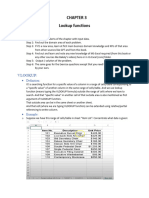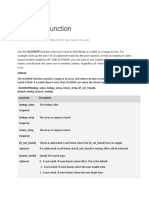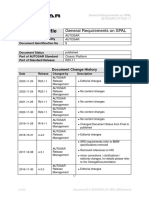0% found this document useful (0 votes)
58 views14 pagesHLOOKUP in Excel - With Examples
The document provides a comprehensive guide on the HLOOKUP function in Excel, which is used for horizontal lookups in tables. It includes definitions, syntax, examples, and practical applications, including VBA usage and error handling with the ISNA function. Additionally, it explains how to return multiple values using an array formula with HLOOKUP.
Uploaded by
chandar70Copyright
© © All Rights Reserved
We take content rights seriously. If you suspect this is your content, claim it here.
Available Formats
Download as PDF, TXT or read online on Scribd
0% found this document useful (0 votes)
58 views14 pagesHLOOKUP in Excel - With Examples
The document provides a comprehensive guide on the HLOOKUP function in Excel, which is used for horizontal lookups in tables. It includes definitions, syntax, examples, and practical applications, including VBA usage and error handling with the ISNA function. Additionally, it explains how to return multiple values using an array formula with HLOOKUP.
Uploaded by
chandar70Copyright
© © All Rights Reserved
We take content rights seriously. If you suspect this is your content, claim it here.
Available Formats
Download as PDF, TXT or read online on Scribd
/ 14











































































































